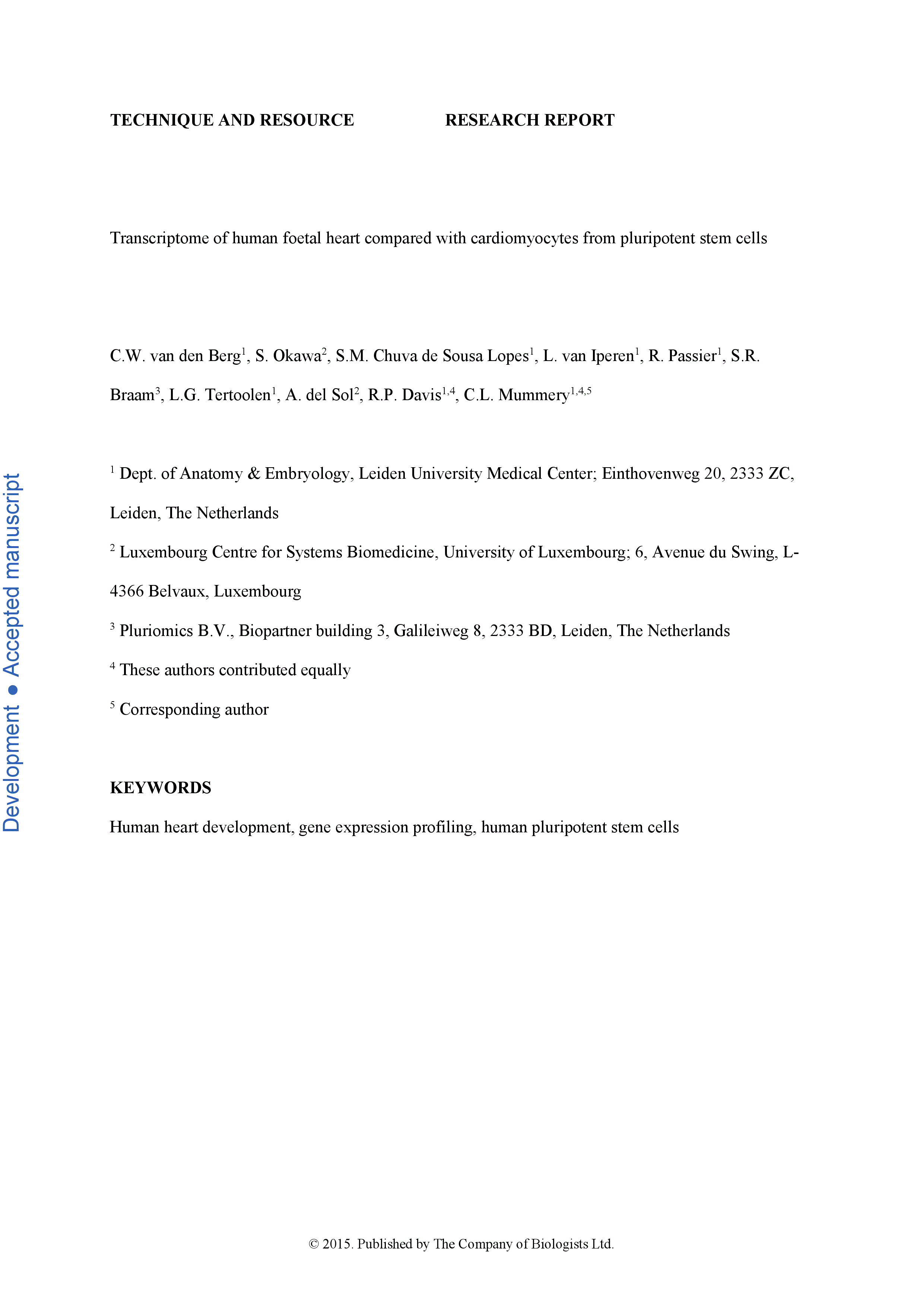Differentiated derivatives of human pluripotent stem cells (hPSCs) are often considered immature because they resemble foetal cells more than adult, with hPSC-derived cardiomyocytes (hPSC-CMs) being no exception. Many functional features of these CMs, such as their cell morphology, electrophysiological characteristics, sarcomere organization and contraction force, are underdeveloped compared to adult cardiomyocytes. However relatively little is known on how their gene expression profiles compare to the human foetal heart, in part because of the paucity of data on the human foetal heart at different stages of development. Here, we collected samples of matched ventricles and atria from human foetuses during the first and second trimester of development. This presented a rare opportunity to perform gene expression analysis on the individual chambers of the heart at various stages of development, allowing us to identify genes not only involved in the formation of the heart, but also specific genes upregulated in each of the four chambers and at different stages of development. The data showed that hPSC-CMs had a gene expression profile similar to first trimester foetal heart but after culture in conditions shown previously to induce maturation, they cluster closer to the second trimester foetal heart samples. In summary, we demonstrate how the gene expression profiles of human foetal heart samples can be used for benchmarking hPSC-CMs and also contribute to determining their equivalent stage of development.
Transcriptome of human foetal heart compared with cardiomyocytes from pluripotent stem cells
These authors contributed equally
Currently Viewing Accepted Manuscript - Newer Version Available
C.W. van den Berg, S. Okawa, S.M. Chuva de Sousa Lopes, L. van Iperen, R. Passier, S.R. Braam, L.G. Tertoolen, A. del Sol, R.P. Davis, C.L. Mummery; Transcriptome of human foetal heart compared with cardiomyocytes from pluripotent stem cells. Development 2015; dev.123810. doi: https://doi.org/10.1242/dev.123810
Download citation file:
Advertisement
Call for papers: Uncovering Developmental Diversity

Development invites you to submit your latest research to our upcoming special issue: Uncovering Developmental Diversity. This issue will be coordinated by our academic Editor Cassandra Extavour (Harvard University, USA) alongside two Guest Editors: Liam Dolan (Gregor Mendel Institute of Molecular Plant Biology, Austria) and Karen Sears (University of California Los Angeles, USA).
Choose Development in 2024

In this Editorial, Development Editor-in-Chief James Briscoe and Executive Editor Katherine Brown explain how you support your community by publishing in Development and how the journal champions serious science, community connections and progressive publishing.
Journal Meeting: From Stem Cells to Human Development

Register now for the 2024 Development Journal Meeting From Stem Cells to Human Development. Early-bird registration deadline: 3 May. Abstract submission deadline: 21 June.
Pluripotency of a founding field: rebranding developmental biology

This collaborative Perspective, the result of a workshop held in 2023, proposes a set of community actions to increase the visibility of the developmental biology field. The authors make recommendations for new funding streams, frameworks for collaborations and mechanisms by which members of the community can promote themselves and their research.
Read & Publish Open Access publishing: what authors say

We have had great feedback from authors who have benefitted from our Read & Publish agreement with their institution and have been able to publish Open Access with us without paying an APC. Read what they had to say.



